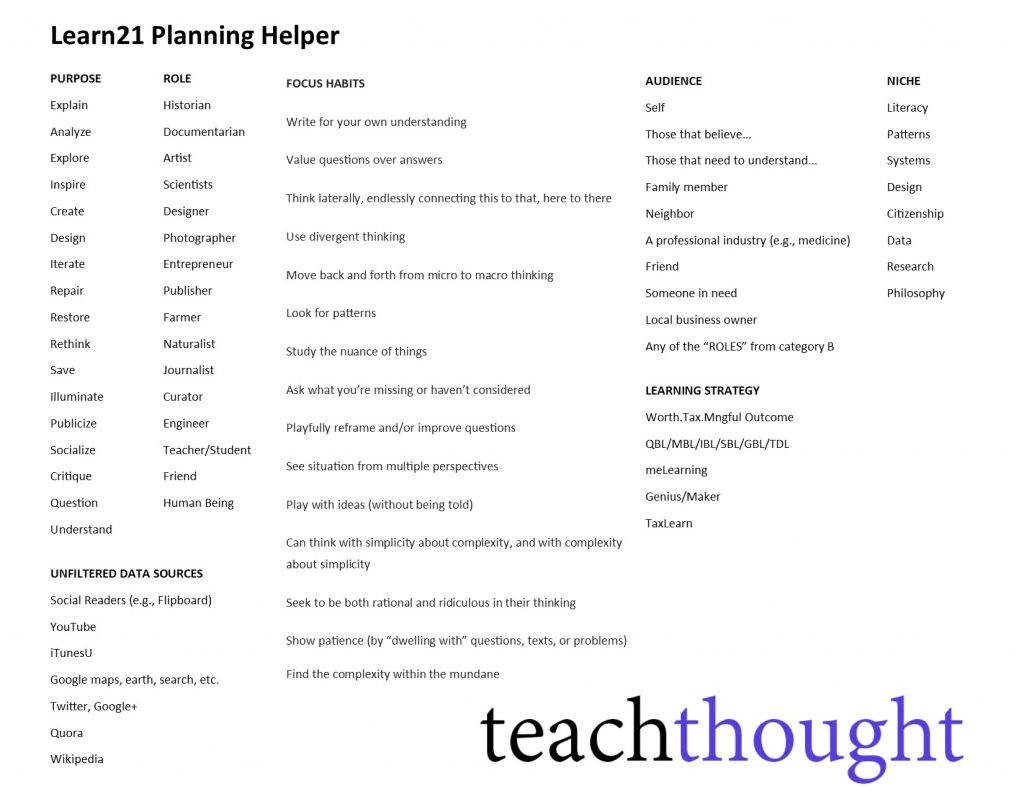


50 Activities To Promote Digital Media Literacy In Students Infer the author’s purpose. Distinguish between primary and secondary audiences. Summarize the media by identifying its 3-5 most important ideas or events. Identify and diagram the literary elements (e.g., setting, characters, conflict, etc.) Identify and analyze characters as major or minor; flat or round; static or…


It could be argued—and probably argued well—that what a student fundamentally needs to know today isn’t much different than what Tom Sawyer or Joan of Arc or Alexander the Great needed to know. Communication. Resourcefulness. Creativity. Persistence. How true this turns out to be depends on how macro you want to get. If we want…
Short Response: 1-4 complete sentences Extended Response 1-4 complete paragraphs Essay: 5 or more paragraphs (also called a ‘paper’ and can be informative, research-based, persuasive, etc.) Chapter 1 Vocabulary: pallid, callow, abject, geniality, florid, zealous, salinity, viscosity, bouillon, prodigious, viviparous, vivacious, interminable, deft, optimum, predestination, sultry, caste, decant. Explain how Huxley uses imagery to establish…